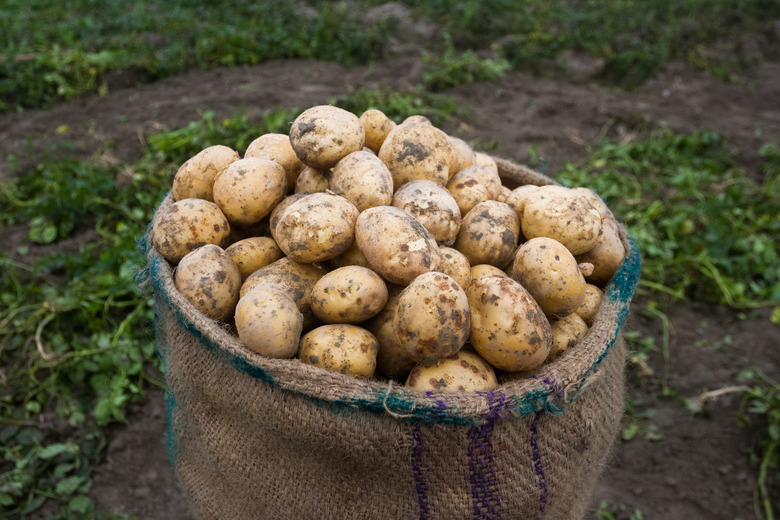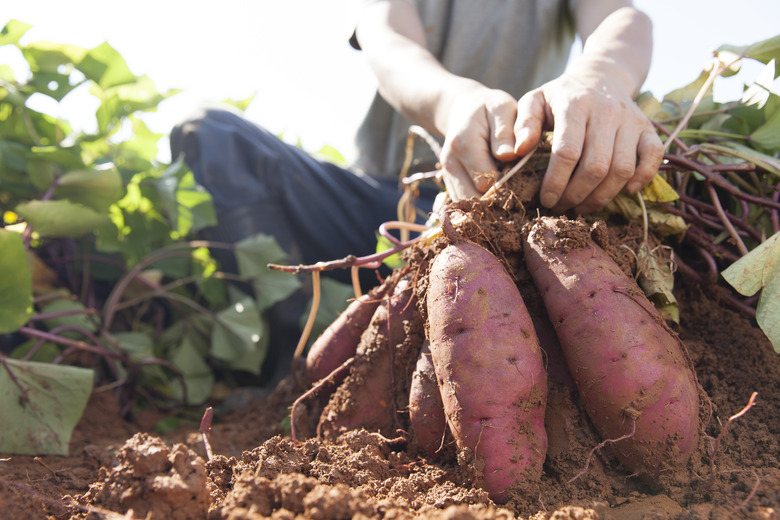The Difference Between Tubers & Root Crops
Root crops and edible tubers both grow underground. These plants have been providing humans with nutritious food for thousands of years. Roots and tubers look similar, but there are differences.
What are Roots and Tubers?
A root is a compact, often enlarged storage organ with hairy stems that develops from root tissue. Tubers are actually underground stems and not roots. More specifically, tubers are enlarged storage organs, but they develop from elongated tissue at the terminal ends of stems instead of from root tissue. A tuber is an edible part of the plant, and a plant can have both roots and tubers.
Carrots and beets are root vegetable crops. Potatoes, sweet potatoes and yams, on the other hand, are edible tuber crops. There are differences in the way edible root crops, or plants, grow and the way edible tubers grow.
The reason root vegetables and edible tubers contain so many starchy nutrients is because these are the parts of the plants that fuel the growth of the plant above ground. While most vegetables grow above ground, root and tuber vegetables are the part of the plant that grows below the soil or on the soil surface.
What is a Tuber?
A tuber is a swollen section of an underground stem that contains nutrients, which it stores to nourish plants. It has nodes called "eyes," from which new plants can grow. Unlike root plants, you can cut tubers apart with at least one eye per section, replant them and they'll grow into new plants.
Vegetables That are Tubers
The white potato is the most common tuber that most Americans eat. Another tuber is the Jerusalem artichoke. Also called a sunchoke, this plant is often eaten raw. It can also be boiled or roasted similarly to potatoes.
The Texas A&M AgriLife Extension lists sweet potatoes and sweet potatoes as other tuber vegetables. Sweet potatoes, native to America, grow in different colors, including orange, white, yellow and red. Yams, which are also edible tubers, aren't sweet potatoes and are native to Africa. They're very large and have white flesh and dark skin.
Cassava is another edible tuber. It's grown in tropical areas and is an important food starch in many parts of the tropical world. It has a short shelf life, however, which makes it hard to grow commercially.
Tubers provide the starch to keep the plants growing, and this is why tubers are important sources of starch in many parts of the world.
Vegetables That are Roots
Carrots, with their hairy stems, are a good example of a root vegetable. The University of Arizona Cooperative Extension further defines the carrot as a taproot, which is a different structure than the fibrous root system of most plants. The part of the carrot plant that we eat grows underground, while carrot greens are the feathery foliage that grows above ground. Carrots, like other root vegetables, contain nutrients and starches for growing the above-ground plant.
Beets, parsnips and turnips are other good examples of root vegetables. All of these vegetables, along with edible tubers, are full of nutritious starch that provides energy for both plants and humans. Sometimes, plant roots and their foliage are both edible. Beets and beet greens are a good example.

